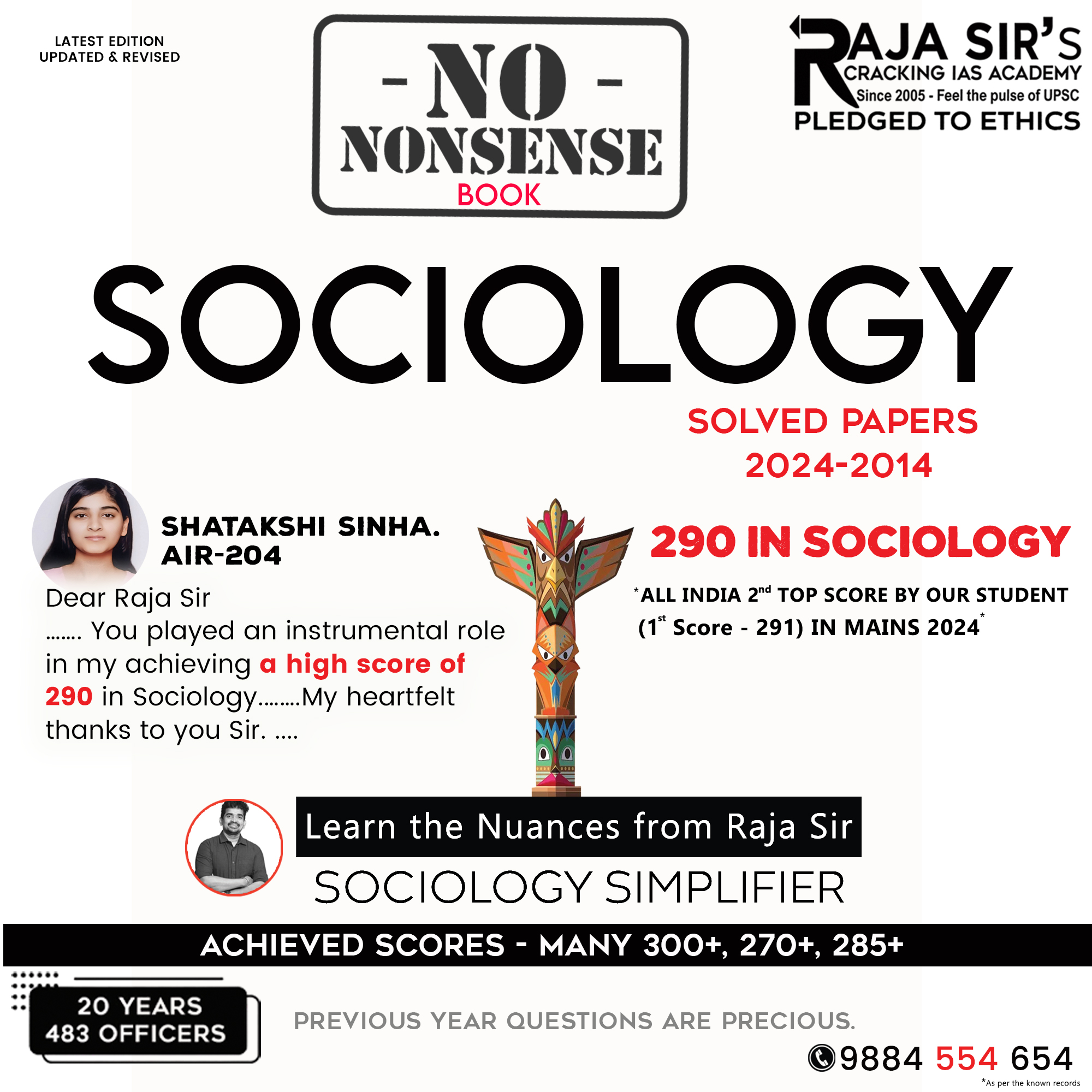- Home
- Prelims
- Mains
- Current Affairs
- Study Materials
- Test Series
Compare capability deprivation approach with that of social capital deprivation in understanding chronic poverty. (UPSC CSE Mains 2025- Sociology, Paper 1) 20 Marks

Chronic poverty is a multidimensional phenomenon that cannot be fully understood through income-based metrics alone. Two influential frameworks—the capability deprivation approach and the social capital deprivation approach—offer deeper insights into its structural and relational roots.
Capability Deprivation Approach
The capability approach views poverty not merely as a lack of income or resources, but as a deprivation of basic capabilities—the real freedoms people have to lead lives they value. It shifts the focus from what people have to what they can do and be.
Amartya Sen
-
- Pioneer of the Capability Approach
- In Development as Freedom (1999), Sen argued that development should be assessed by the expansion of people’s capabilities, not just economic growth.
- Core Idea: Poverty is the inability to achieve functionings—such as being healthy, educated, or participating in community life—due to lack of capabilities.
Martha C. Nussbaum
-
- Expanded the approach with a normative framework
- In Creating Capabilities (2011), she proposed a list of central human capabilities, such as bodily health, emotions, practical reason, and control over one’s environment.
- Core Idea: A just society must ensure that all individuals have the opportunity to develop and exercise these capabilities.
It understands chronic poverty as a lack of fundamental capabilities—real freedoms and opportunities to lead the kinds of lives individuals value. It highlights deprivations in basic capabilities like nutrition, education, health, and political participation. Chronic poverty here is the persistent inability of individuals to convert resources into valuable functionings due to both personal limitations and social structures restricting access to essential services and freedoms.

Social capital deprivation approach
Social capital refers to the networks, norms, trust, and relationships that enable individuals and communities to function effectively. Social capital deprivation occurs when individuals or groups lack access to these relational resources, leading to social exclusion, limited opportunities, and chronic poverty.
Pierre Bourdieu
-
- Contribution: Defined social capital as the aggregate of actual or potential resources linked to a durable network of relationships.
- Insight: Poverty is not just economic but also relational—those without strong networks are excluded from opportunities and influence.
Robert Putnam
-
- Contribution: In Bowling Alone, he emphasized the decline of civic engagement and community ties in the U.S.
- Insight: Weakening social capital leads to reduced trust, cooperation, and collective action, which can deepen poverty and inequality.
Social capital deprivation approach focuses on the absence or erosion of social networks, trust, and reciprocal relationships that provide individuals and communities with access to resources, information, and support. Chronic poverty in this view is intensified by weak social bonds and exclusion from beneficial social connections, which hampers a community’s ability to cope with economic shocks, mobilize collective action, and access opportunities essential for upward mobility.
|
Aspect |
Capability Deprivation Approach |
Social Capital Deprivation Approach |
|
Definition |
Lack of essential capabilities to live a valued life |
Lack of social networks, trust, and reciprocity |
|
Focus |
Individual freedoms and opportunities |
Social relationships and support systems |
|
Source of Poverty |
Deprivation in health, education, nutrition, rights |
Absence of strong social bonds and trust |
|
Nature of Deprivation |
Multidimensional (health, education, political freedom) |
Relational (exclusion from community and network) |
|
Poverty Mechanism |
Limited access to basic services and freedoms |
Limited access to information, resources, and support |
|
Intervention |
Improving access to education, healthcare, rights |
Building social networks, trust, community participation |
|
Example (India context) |
Malnourished children lacking education |
Marginalized caste communities excluded from networks |
Together, these frameworks reveal that poverty is not just about income or material lack—it is also about relational isolation and constrained agency. Addressing chronic poverty effectively demands policies that expand individual capabilities while also strengthening social bonds and community participation. Only by integrating both perspectives can we move toward a more inclusive and empowering model of development.
India’s government programs like MGNREGA, National Health Mission, and educational schemes aim to address capability deprivation, while community mobilization and self-help groups work towards rebuilding social capital in marginalized areas.










 Latest News
Latest News
 General Studies
General Studies